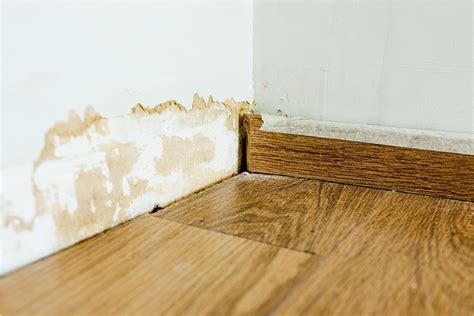Slab Leak Repair

Slab leak repair is a crucial aspect of maintaining the integrity and functionality of residential and commercial properties. These leaks, often hidden beneath concrete slabs, can cause extensive damage if left undetected and untreated. In this comprehensive guide, we delve into the world of slab leak repair, exploring the causes, detection methods, repair strategies, and preventive measures. By understanding the intricacies of this issue, we can ensure the long-term health and safety of our structures.
Understanding Slab Leaks: Causes and Common Issues

Slab leaks, also known as foundation leaks, occur when water pipes beneath concrete slabs develop leaks or cracks. These leaks can be attributed to various factors, including soil conditions, corrosion, aging pipes, and even natural disasters. The most common causes include shifting soil, corrosive substances in the water, and the degradation of older pipes over time.
One of the primary concerns with slab leaks is their ability to go unnoticed for extended periods. Leaks beneath the concrete slab can lead to significant structural damage, including foundation settling, cracks in walls and floors, and even mold growth. Additionally, the constant seepage of water can result in increased utility bills and potential health hazards due to the growth of harmful bacteria.
Detecting Slab Leaks: Advanced Techniques and Tools

Early detection is crucial to minimize the impact of slab leaks. Property owners and professionals employ a range of methods to identify these leaks accurately. Some of the advanced techniques include:
- Acoustic Listening Devices: These devices amplify the sound of water leaks, allowing professionals to pinpoint the exact location of the problem. By listening for the distinctive sound of water escaping from pipes, experts can narrow down the affected area.
- Thermal Imaging: Thermal imaging cameras detect temperature differences on the surface of the concrete slab. Since water leaks often result in cooler areas, thermal imaging can help identify potential leak spots.
- Electronic Leak Detection: This method involves using specialized equipment to locate leaks by detecting changes in electrical conductivity caused by water presence.
- Pressure Testing: By adjusting the pressure within the water system and monitoring for changes, professionals can identify areas where leaks may be present.
It is essential to engage experienced professionals who can utilize these advanced tools effectively, ensuring accurate leak detection and prompt repair.
Repair Strategies: From Repiping to Leak Sealing
Once a slab leak is detected, the appropriate repair strategy must be implemented to address the issue effectively. The chosen method depends on various factors, including the extent of the leak, the accessibility of the pipes, and the overall condition of the plumbing system.
Repiping: A Comprehensive Solution
In cases where the slab leak is extensive or the pipes are severely damaged, repiping may be the best course of action. Repiping involves replacing the entire water supply line beneath the slab, ensuring a long-term solution to the problem. This method is particularly effective for older homes with outdated plumbing systems.
| Advantages of Repiping | Disadvantages of Repiping |
|---|---|
| Ensures a reliable and durable water supply system. | Requires significant excavation and disruption. |
| Improves water pressure and flow. | Can be costly, especially for larger properties. |
| Reduces the risk of future leaks. | May require temporary water shutoffs. |

Leak Sealing and Repairs
For minor leaks or when repiping is not feasible, leak sealing techniques can be employed. These methods involve accessing the damaged pipe through small holes drilled in the concrete slab and then sealing the leak using specialized materials.
One popular method is epoxy injection, where a two-part epoxy resin is injected into the pipe to create a durable seal. Another technique, cured-in-place pipe (CIPP) lining, involves inserting a flexible liner into the pipe, which is then inflated and cured to create a new, seamless pipe within the old one.
Preventive Measures: Ensuring Long-Term Protection
While slab leak repair is essential, implementing preventive measures can help minimize the likelihood of future issues. Here are some strategies to consider:
- Regular Plumbing Maintenance: Schedule routine inspections and maintenance checks to identify potential problems early on. This includes checking for corrosion, inspecting water pressure, and ensuring proper drainage.
- Upgrading Plumbing Systems: Consider upgrading to more durable and corrosion-resistant pipes, such as PEX or copper, to reduce the risk of future leaks.
- Water Treatment: Installing water softeners or filtration systems can help reduce the corrosive effects of hard water on pipes, extending their lifespan.
- Soil Stabilization: In areas prone to soil movement, implementing techniques like soil stabilization or foundation underpinning can help prevent slab leaks caused by shifting soil.
Conclusion: A Comprehensive Approach to Slab Leak Repair

Slab leaks are a serious issue that requires a comprehensive understanding and approach. From advanced detection methods to various repair strategies and preventive measures, professionals and property owners can effectively address these leaks. By staying vigilant and engaging experienced experts, we can ensure the structural integrity and safety of our homes and commercial spaces.
Frequently Asked Questions
What are the signs of a slab leak?
+
Signs of a slab leak include unexplained increases in water bills, the sound of running water when no faucets are turned on, and visible cracks or damp spots on floors or walls. In some cases, mold growth or a musty odor may also indicate a slab leak.
How much does slab leak repair cost?
+
The cost of slab leak repair varies depending on the extent of the leak, the accessibility of the pipes, and the chosen repair method. Repiping can range from a few thousand to tens of thousands of dollars, while leak sealing methods may be more cost-effective for minor leaks, starting at a few hundred dollars.
Can I repair a slab leak myself?
+
Slab leak repair is a complex task that often requires specialized tools and expertise. It is recommended to engage licensed plumbers or leak detection specialists who have the necessary skills and equipment to accurately locate and repair slab leaks. Attempting DIY repairs may lead to further damage and increased costs.



